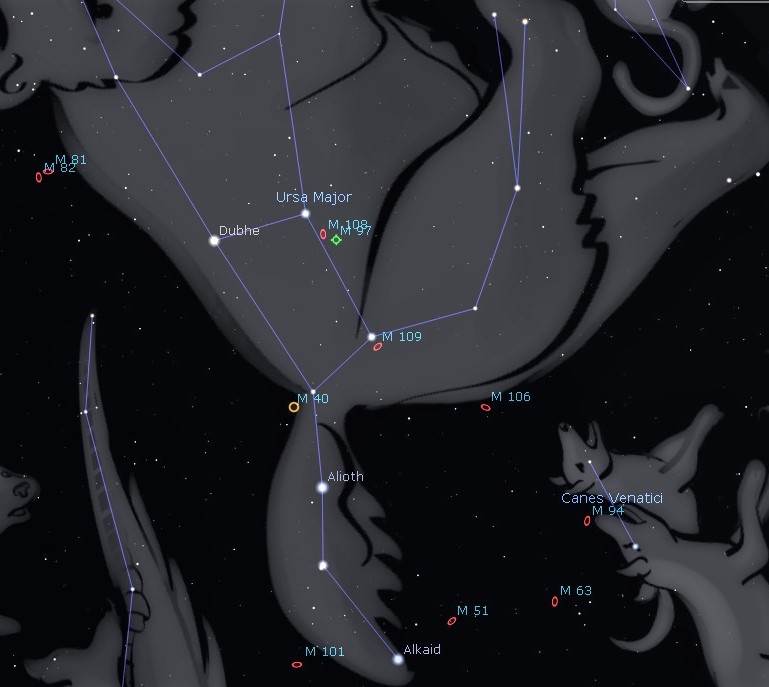This Week’s Sky at a Glance, 2020 March 21 – 28 ~by Curt Nason
For stargazers, early spring means it is time for a Messier Marathon. In 1758 a French comet hunter, Charles Messier, started compiling a catalogue of nebulous objects in the sky that resembled comets but weren’t. His completed catalogue was issued 13 years later with 103 objects. In the mid-20th century the catalogue was expanded to 110 based on Messier’s notes. Under a clear, dark sky all of the Messier objects can be seen in a small telescope, and it is a rite of passage for amateur astronomers to locate and observe them all.
The Messier catalogue includes 57 star clusters, 40 galaxies, 12 nebulae of new or dying stars, and an enigmatic pair of stars. The first on the list, called M1, is the Crab Nebula, the gaseous remnant of a supernova that was seen in daylight in 1054. M110 is a galaxy seen near M31, the Andromeda galaxy. The easiest to see is M45, the star cluster also known as the Pleiades or Seven Sisters. The Orion Nebula, a stellar nursery in Orion’s sword, is M42, with the much less spectacular M43 nearby. Ursa Major has seven Messiers including M51, the Whirlpool galaxy, and M97, the Owl Nebula.
For a few weeks in March and April, around the time of a new Moon, it is possible to see all the Messier objects in one night, hence the Messier Marathon. However, from New Brunswick, the globular cluster M30 in Capricornus rises in bright twilight and is pretty much impossible to see at this time of year. That hasn’t kept some stellar stalwarts from trying.
This Week in the Solar System
Saturday’s sunrise in Moncton is at 7:19 am and sunset will occur at 7:33 pm, giving 12 hours, 14 minutes of daylight (7:24 am and 7:38 pm in Saint John). Next Saturday the Sun will rise at 7:05 am and set at 7:43 pm, giving 12 hours, 38 minutes of daylight (7:11 am and 7:47 pm in Saint John).
The Moon is new on Tuesday, with the waxing crescent smiling at us after sunset later in the week. Check out the planetary line-up each morning, with Mars moving from Jupiter toward Saturn. On Tuesday morning Mercury is at its greatest elongation from the Sun, and that evening Venus reaches its greatest elongation.
All local public astronomy events are cancelled. However, you can catch the local Sunday Night Astronomy Show on YouTube (March 22 and 29) at 9 pm, and watch previous shows.
Questions? Contact Curt Nason.

